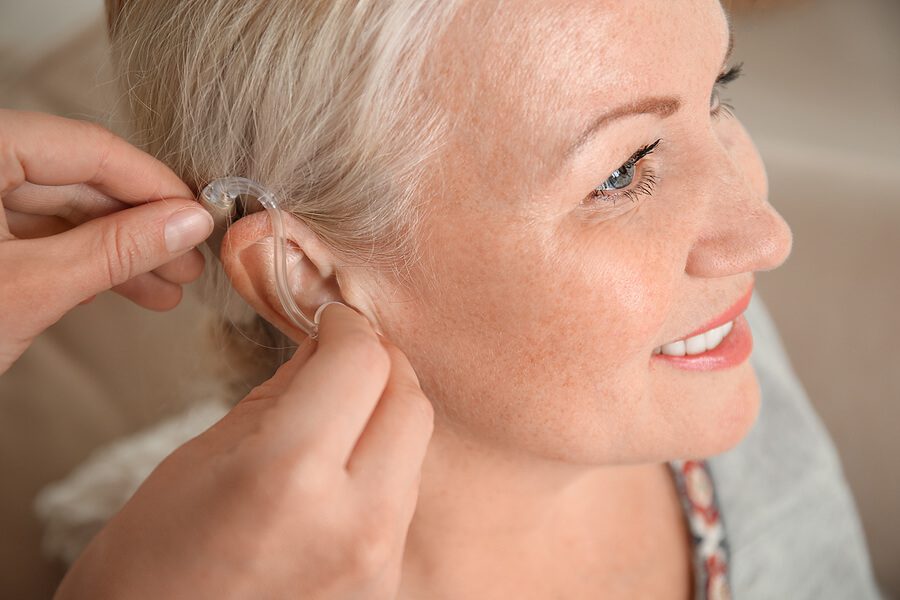All About Bluetooth Hearing Aids
Do you remember the hearing aids your parents or grandparents used to

By: nick | October 26, 2023
Hearing aids are remarkable devices that can transform the lives of those with hearing loss. However, like any technology, they can occasionally malfunction. If you’re a hearing aid wearer, you may have encountered a few issues along the way. Here are ten common hearing aid issues and how you can resolve them.
Issue: Your hearing aids are silent, and you’re left in a world of muted sounds.
Fix: Start with the basics – check if your hearing aids are powered on. Ensure the volume is adjusted correctly. Clean the microphones and receivers, as clogs can cause sound issues. If these steps don’t work, consult your hearing health specialist for hearing aid maintenance.
Issue: Hearing aids are whistling or producing feedback, creating a squeaky, distracting noise.
Fix: Check if your hearing aids are properly placed in your ears. Earwax buildup can cause feedback, so ensure your ears are clean. If you think you may have a buildup of earwax in your ear canal, don’t try to clean your ears with a Q-tip. Instead, visit your health professional to have earwax safely removed. Adjust the volume on your devices or consult your hearing health specialist if the issue persists.
Issue: You experience discomfort or pain when wearing your hearing aids.
Fix: Make sure your hearing aids are fitted properly. Check for any physical damage or wear and tear on the devices. You may need some hearing aid adjustments or different earmolds.
Issue: Sounds seem muffled or unclear with your hearing aids.
Fix: Check for earwax or debris in the microphones, which can affect sound quality. Clean your hearing aids regularly and consider a hearing test to rule out changes in your hearing that may require adjustments.
Issue: The sound through your hearing aids is distorted, fuzzy, or unclear.
Fix: Check for earwax in the microphones and receivers, which can cause distortion. If the issue persists, consult your hearing health specialist. It may be a sign that your hearing aids need maintenance or adjustments.
Issue: Your hearing aid batteries don’t last as long as they used to.
Fix: Make sure you’re using the correct type of battery recommended by your hearing aid manufacturer. Store batteries in a cool, dry spot to ensure the best battery performance. You can also consider rechargeable hearing aids if battery life remains a problem.
Issue: If your hearing aids are equipped with wireless features, you might encounter connectivity issues with your devices or apps.
Fix: Ensure your hearing aids are correctly paired with your smartphone or other devices. Update your hearing aid app or software to the latest version. If issues persist, contact your hearing aid provider for tech support.
Issue: Your hearing aids might reduce feedback by making quick volume adjustments, but this can be uncomfortable.
Fix: Talk to your hearing health specialist about adjusting the feedback suppression settings. These customizable settings can be adjusted to match your hearing needs and preferences. Finding the right balance between feedback control and comfort is essential.
Issue: You find it challenging to focus on a conversation because background noise is too loud.
Fix: Many modern hearing aids come with noise-reduction features. Check if your hearing aids have this functionality and ensure it’s correctly set up. Adjust the settings to prioritize speech over noise.
Issue: Humidity and moisture can lead to damage to your hearing aids.
Fix: Invest in a dehumidifier for overnight storage. Ensure your hearing aids are stored in a cool, dry place when not in use. If your devices are exposed to moisture, remove the batteries, open the battery doors, and let them air dry.
Preventing issues is often easier than fixing them. Regularly clean and maintain your hearing aids according to the manufacturer’s instructions. This includes cleaning your hearing aids daily and storing them correctly. It’s also a good idea to schedule routine check-ups with your hearing health specialist to catch and address any potential problems early. We’re here to help you maintain your hearing aids, and offer ongoing support.

Do you remember the hearing aids your parents or grandparents used to
By: admin | August 7, 2022

Do you ever find yourself at the end of a long day only to be confronted
By: admin | August 7, 2022

How Common is Hearing Loss Many people might be shocked to learn how
By: admin | June 22, 2022
